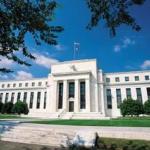 To sharpen the mind and calibrate the senses we begin with an old paradox…
To sharpen the mind and calibrate the senses we begin with an old paradox…
“A man says that he is lying,” posited fourth century BC Greek philosopher Eubulides of Miletus. “Is what he says true or false?”
You tell us… For if the man’s claim he is lying is true, then he is lying; the statement is false. If the man’s claim he is lying is not true, then he is not actually lying; the statement is true.
Obviously, answering the question using logic, leads to a logical contradiction. It ties the mind into a giant knot. How can it be possible that what the man says is true or what he says is false? It can’t. Thus we’re left with unsolvable impasse, the Liar Paradox.
Naturally, recounting this paradox is not without motive. For one thing, it allows us to do something people rarely do these days…think. Plus, it’s a good warm up for contemplating contemporary monetary policy…
To Taper or Not to Taper?
Be it by hook or by crook, the geniuses at the Federal Reserve have navigated the economy and the financial system into an equally absurd conundrum. Somehow, through their heavy handed intervention into credit markets, they’ve painted themselves into an inescapable corner. On the eve of their 100th year anniversary, they’ve effectively reduced Fed policy to the feeble absurdity of: To taper or not to taper?
If you recall, tapering doesn’t mean the Fed would stop creating $85 billion per month from nothing to buy treasuries and mortgages. Rather, it means they’d just taper back a little bit to see what happens. If you’re charged with protecting the integrity of the dollar this seems like something you’d do sooner than later.
Yet the Fed’s toyed with the idea since September. Initially, they said they’d taper back their asset purchasing program to $70 or $75 billion a month. But they haven’t. Instead, they’ve used the government shutdown and debt ceiling debate as convenient cover for prevaricating.
No doubt, there’s always a reason the Fed can point to for keeping the monetary pedal to the metal. Naturally, there’s the unemployment rate…the metric that staff at the Census Bureau make up. Apparently, despite falling to 7 percent, the unemployment rate’s still too high for the FOMC to taper.
Quite frankly, the Fed’s terrified of tapering. They’re frightened stock and credit markets will panic again…like they did when the Fed first mentioned the possibility. Markets are dependent upon the Fed’s easy money these days. Take it away and things might implode.
Fed Policy Reduction
Through its own doing, this is the inconvenient place the Fed currently finds itself. QE, as you know, lowered long-term interest rates to encourage borrowing, new jobs, and investment. While this has been ineffective at stimulating jobs creation…it has stimulated new stock market highs.
What’s more, Fed officials aren’t sure what to do about it. Their decision making’s been reduced to the question of whether they should or shouldn’t taper. Moreover, they can’t seem to find consensus on it…
‘“I’ll be open-minded,”’ said Charles Evans, the president of the Federal Reserve Bank of Chicago, in an interview last week with Reuters Insider, when asked whether he would support trimming the Fed’s stimulus at its policy meeting on December 17-18.
“Everything else (being) equal, I would like to see a couple of months of good [employment] numbers. But this was improvement.”
On the other hand, Evans’ cohort, “Charles Plosser, the president of the Federal Reserve Bank of Philadelphia, said the November jobs report was more evidence that the U.S. central bank should end the bond-buying program.
‘“The sooner we can end this thing, the better.”’
Here at the Economic Prism we side with Plosser over Evans. But we also believe the damage was done long ago. There’s no escaping it.
The Fed’s actions have been unduly reckless. They can’t unwind this thing without making a bigger mess than if they’d stayed out of it to begin with. The consequences will be astounding.
Sincerely,
MN Gordon
for Economic Prism




